The Onvo L90 is an important car for China. It is the first affordable full-size SUV with battery swap technology. It also has lots of tech, power, and a big frunk. Onvo launched the L90 in China earlier this month with a base price of $39K.
Who is who? NIO Inc., NIO, Onvo, and Firefly
NIO Inc. is a Chinese EV company founded in 2017 and based in Shanghai. It owns 3 brands:
- NIO, mid-high end and high-end, launched in 2016. Models: 9. Price range: $42K – $113K.
- Onvo, mid-market, launched in 2024. Models: 2. Price range: $26K – $39K.
- Firefly, budget, launched in 2025. Models: 1. Price range: $16.7K – $17.5K.
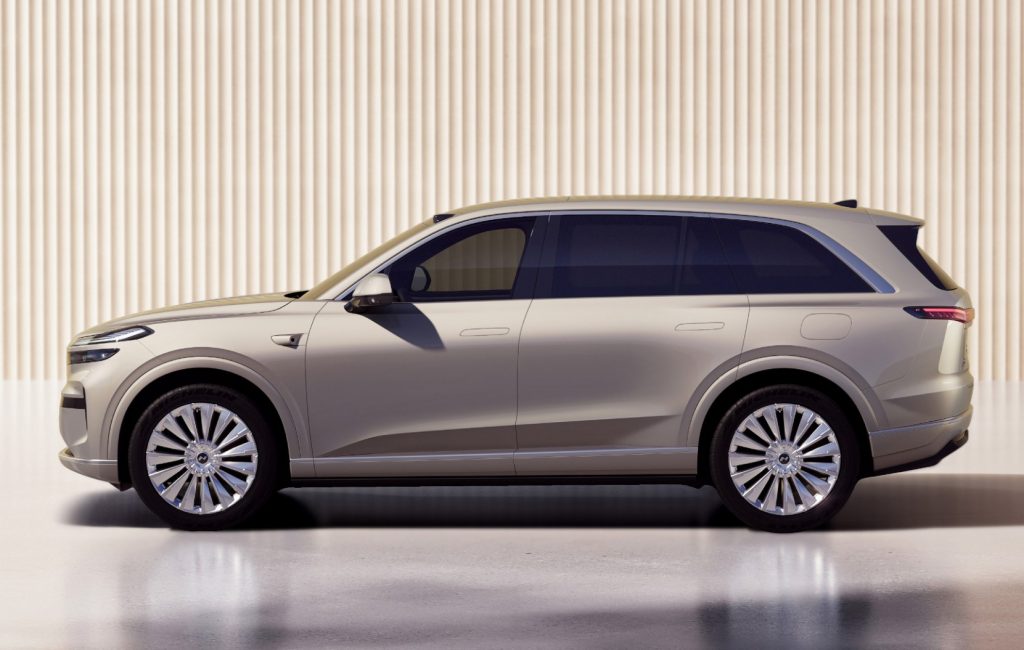
NIO Inc. sells approximately 20,000–25,000 vehicles per month. In June 2025, the company delivered 24,925 cars in China: 14,593 for NIO, 6,400 for Onvo, and 3,932 for Firefly.
For some perspective, there are 107 car brands in China right now. In May 2025 (full June data is not yet available), NIO ranked 33rd, Onvo 49th, and Firefly 60th. Eventually, NIO Inc. expects Onvo to reach a monthly sales volume of around 20.000 units.
NIO Inc. is famous for battery swapping
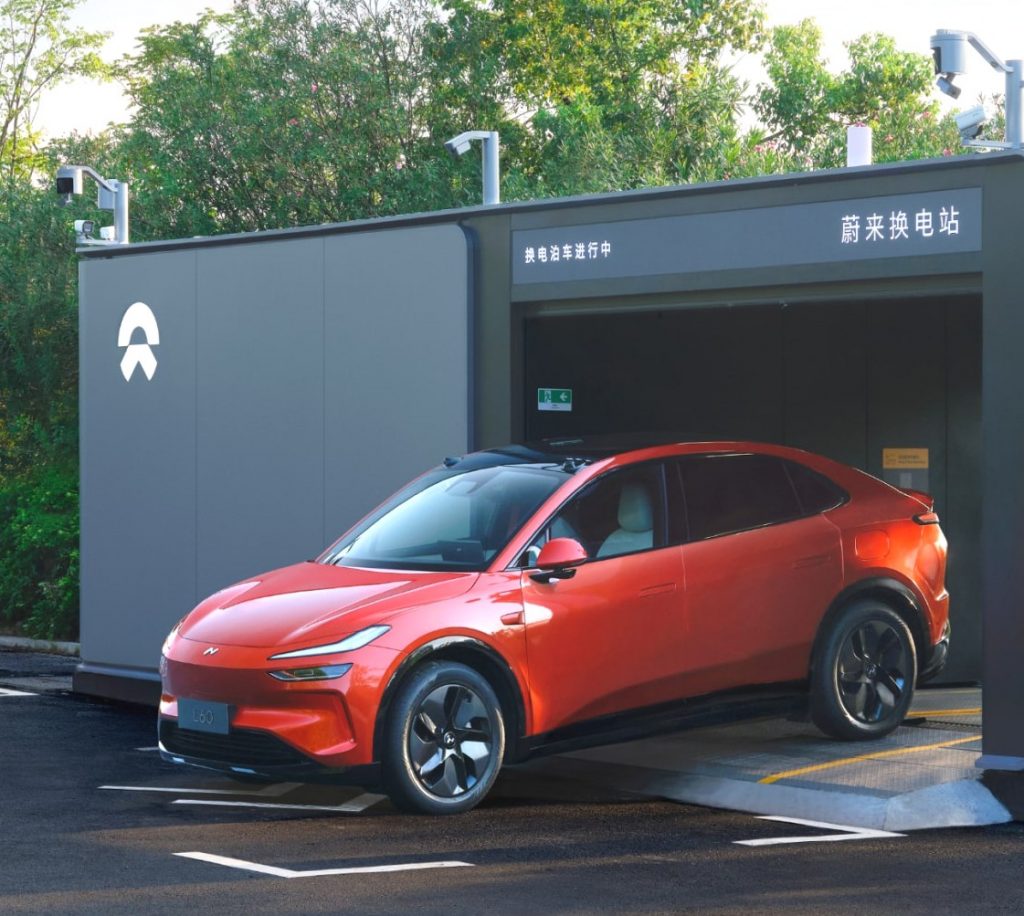
NIO Inc.’s unique selling point is its battery-swapping technology. A swap takes just 3–5 minutes and is fully automated. The car drives itself into the station, swaps the battery, and exits autonomously. Each station is equipped with multiple cameras and radar systems to guide the vehicle. Throughout the process, the car and station remain connected via the cloud over a 5G network.
In general, the system works exceptionally well in China. Swapping has even developed a cult following—some owners have completed entire journeys from Shanghai to Tibet using only swap stations. NIO Inc. operates 3,400 swapping stations in China (and counting), and 2,048 of these stations are available for Onvo drivers. Onvo has a cool map on its website that shows the number of swaps in real time.
Swapping ain’t free. Users pay for each swap, and an additional fee for the energy used in the battery that they return.
More about Onvo
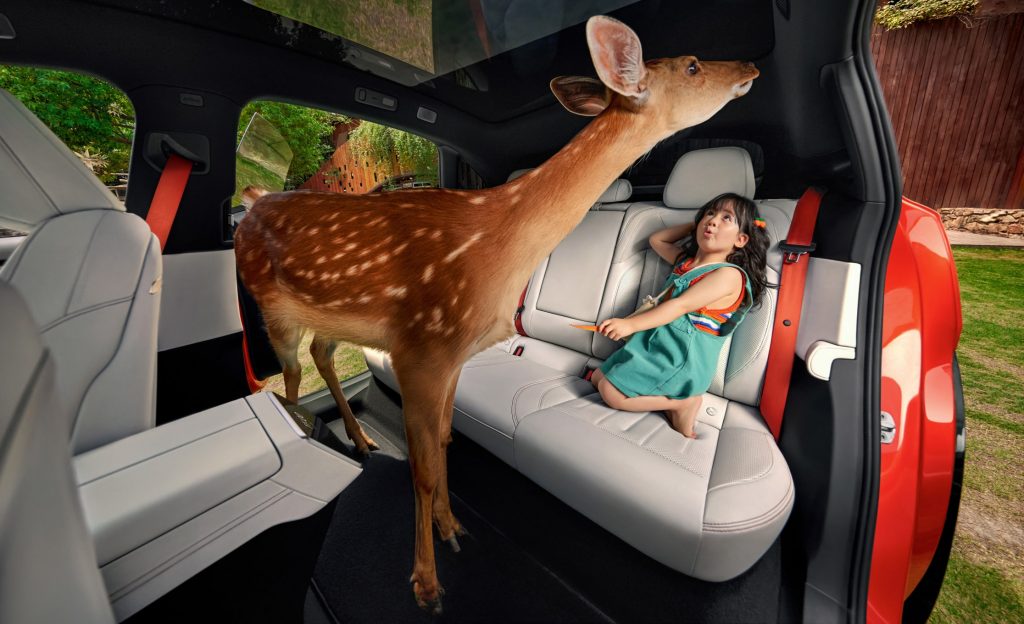
Onvo is NIO’s mid-market electric vehicle brand, targeted at young families. The name “Onvo” is derived from “On Voyage”. Its Chinese name, 乐道 (Lèdào), is best translated as “Path to Happiness,” echoing the brand’s vision: “Creating happiness on every path we travel with family.” Onvo launched its first vehicle, the L60 SUV-coupe, in September 2024.
The Onvo L90: Spacious, Stylish, and Seriously Frunk-Focused
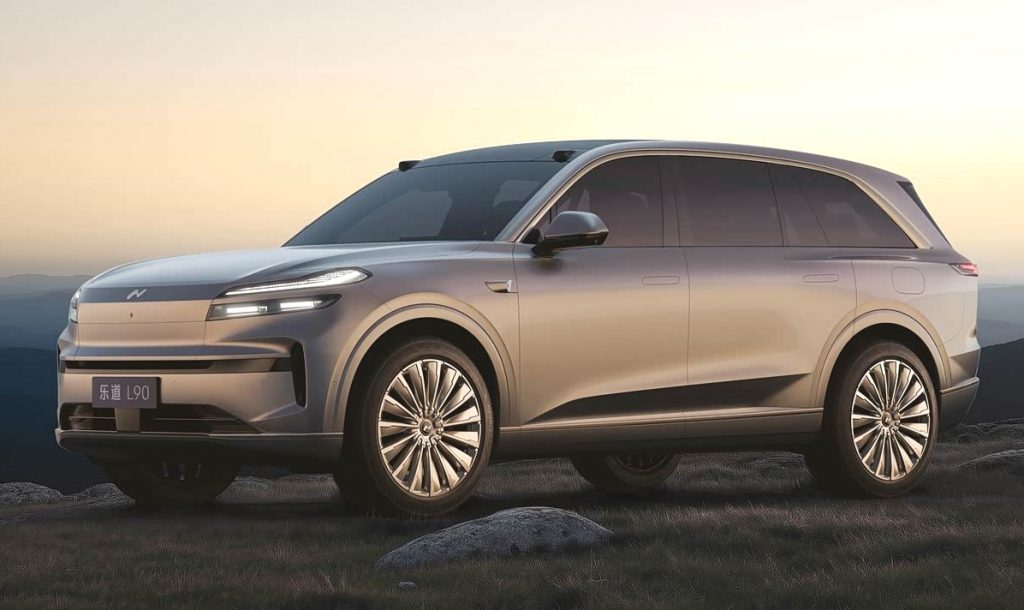
The Onvo L90 is a large electric SUV with a clean, functional design that avoids unnecessary frills. The front is sleek and grille-less, featuring slim upper LED lights and rectangular lower headlamps.
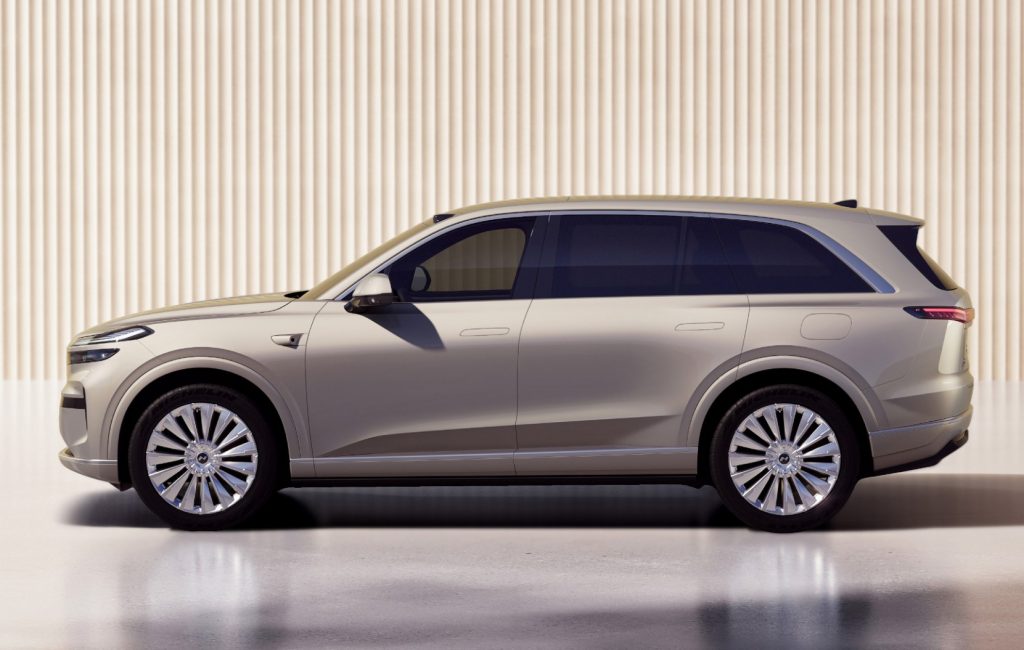
Its side profile is simple and elegant, but not overly exciting, marked by a single shoulder line, flush door handles, and blacked-out pillars that create a “floating roof” effect.
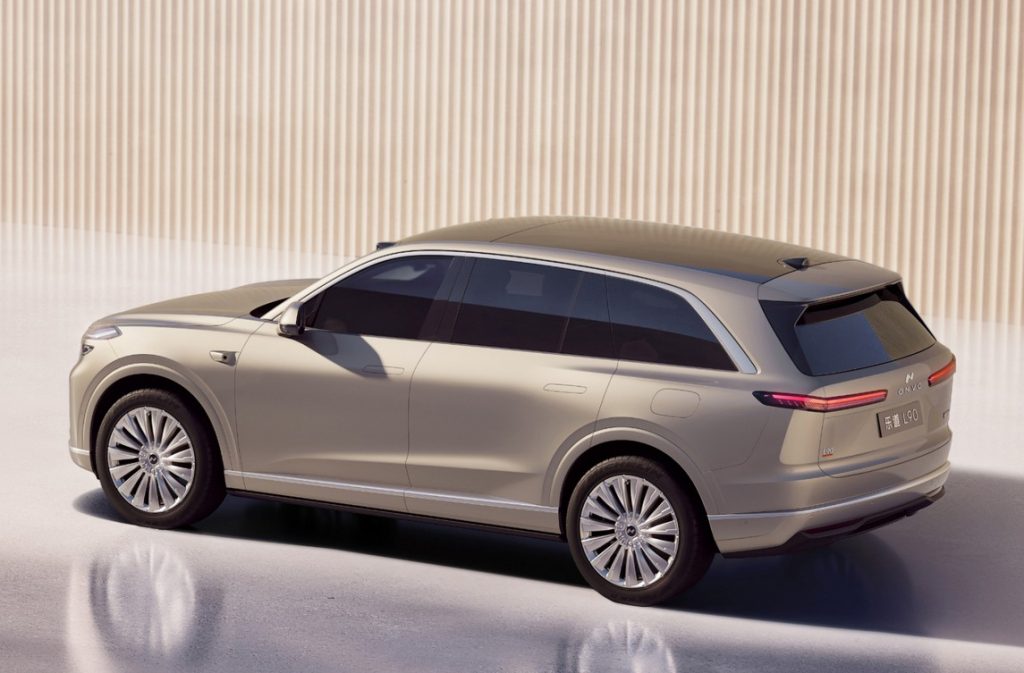
A chrome strip runs along the top edge of the side windows, with additional chrome accents on the bumpers and lower doors. The darkened taillights stand out with an unusual kink at the corner, extending into the rear fenders. It has 255/55 R20 tires at the front and 275/55 R20 at the rear. The bling-style 15-spoke alloy aeroblade wheels look great.
Interior: A luxury Lounge
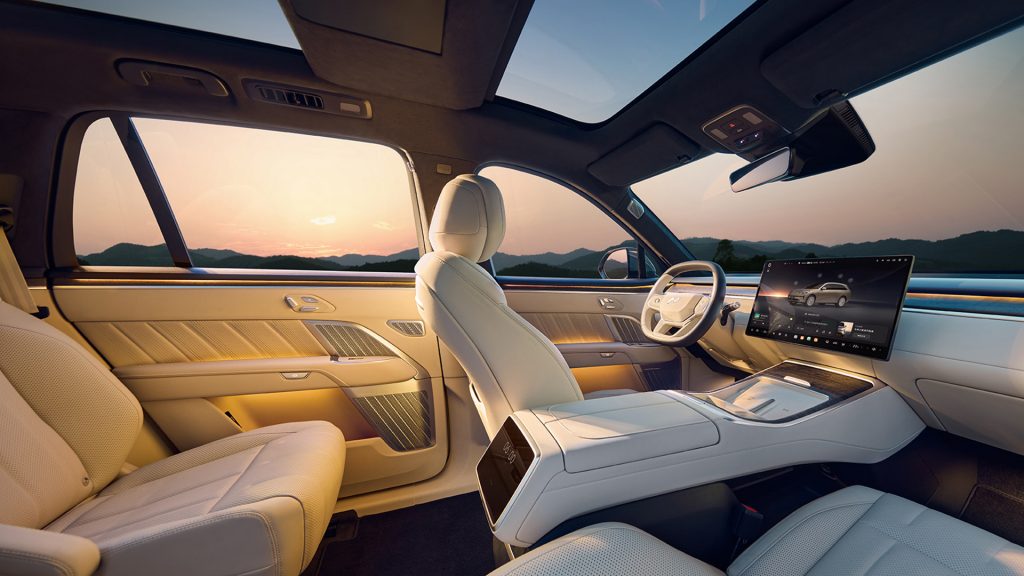
The “Urban Oasis” interior is all about space and luxury. It features six Napa-leather seats and plenty of aluminum and wood trim. Front and center is a massive 17.2-inch 3K touchscreen, complemented by a 35-inch AR-HUD. The center tunnel includes two air-cooled 50W wireless phone chargers, cooled and heated cup holders, and storage in the armrest and beneath the tunnel. Guess what Onvo has to show how large that storage space is..?
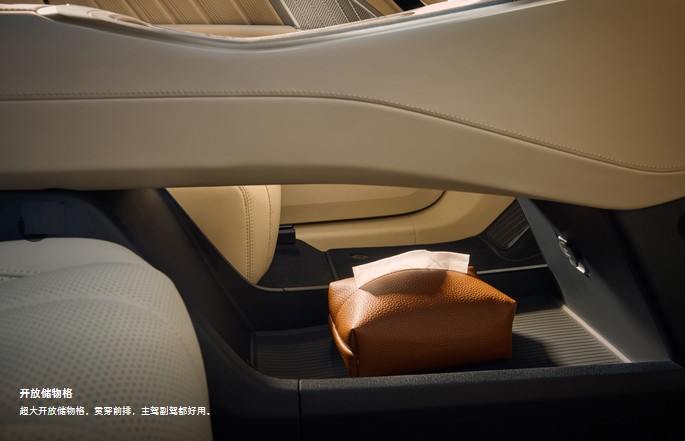
Of course, a tissue box.
Captains of the Second Row
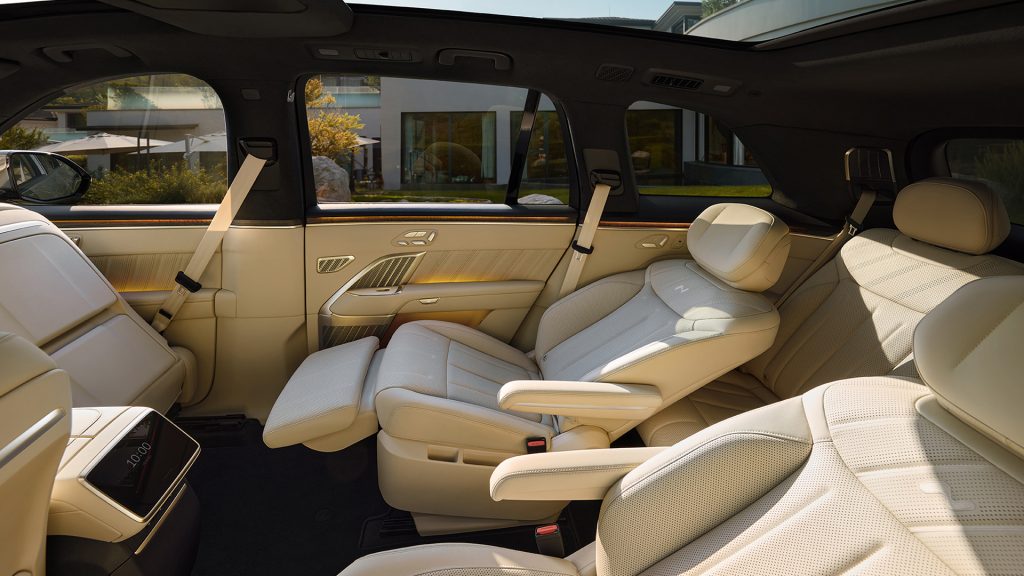
The second row offers two ultra-wide captain’s chairs, each equipped with tray tables, armrests, leg rests, and side storage compartments. Seat controls are placed on the door panel just below the window, unusual but it enhances the premium feel. Naturally, there are no traditional door handles. Instead, doors open with the push of a button.
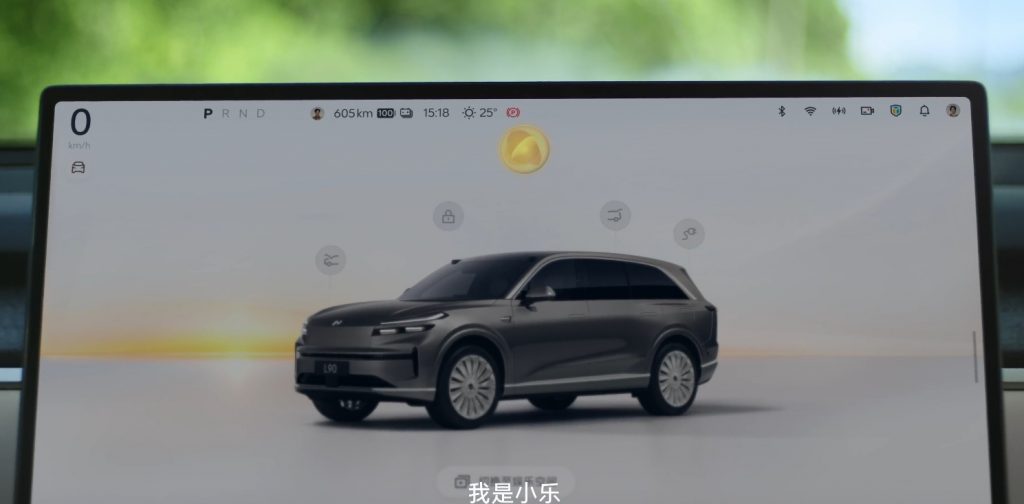
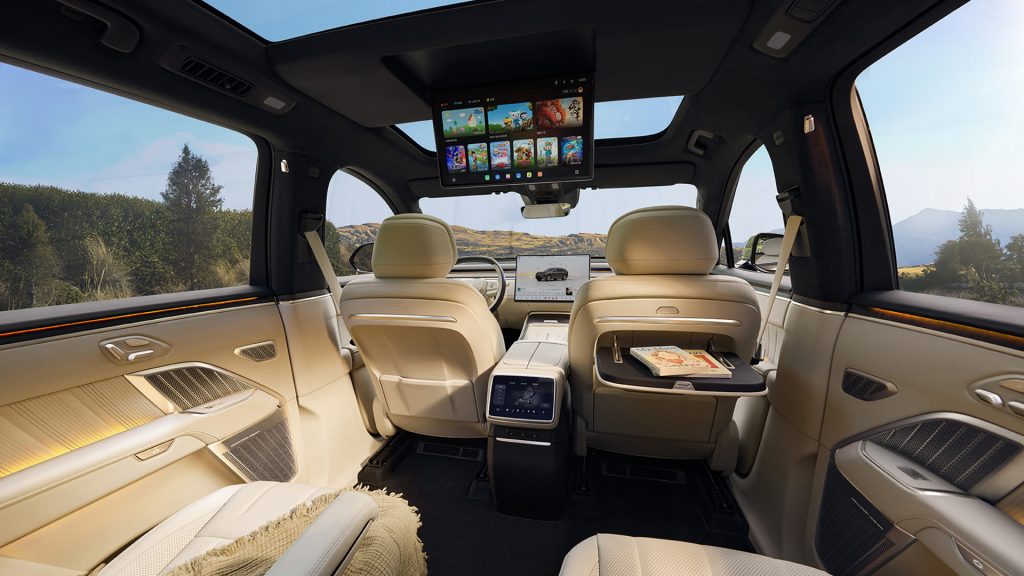
Passengers in the second row can enjoy a 17.3-inch ceiling-mounted entertainment screen, controlled from a panel between the front seats. The system includes karaoke, movies, music, social media, and access to Onvo’s app store, so users can download whatever they want. The computing power for the cabin’s infotainment comes from a Qualcomm Snapdragon 8295P chip. Between the front seats is an 8-inch rear screen. Below that is a 0.31 cubic foot refrigerator.
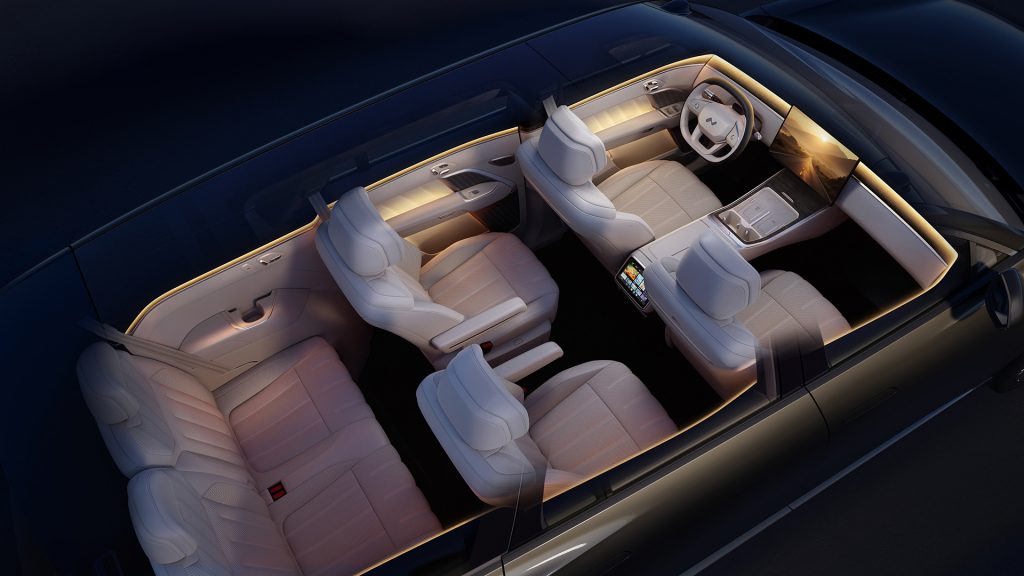
It also has a “Galaxy Fantasy Ambient Lighting” ambient lighting system, with 3 layers, 256 colors, 16 pre-set themes, and 4 rhythm models. The Onvo Sound Premium sound system has 23 speakers, a 24-channel amplifier system, and a maximum power of 2048W.
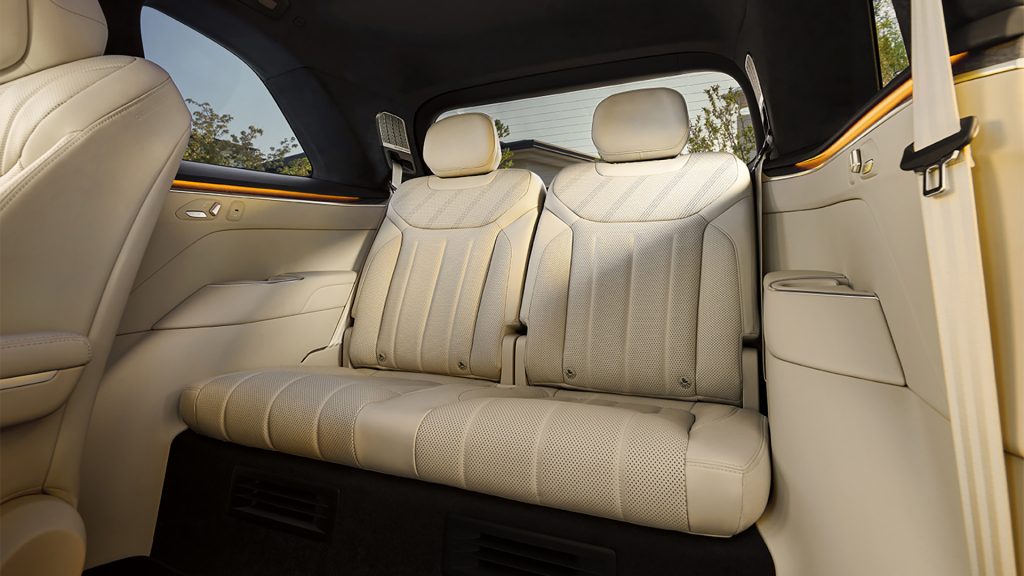
The third row is slightly more compact but still comfortable enough for two adults.
Flexible within Limits
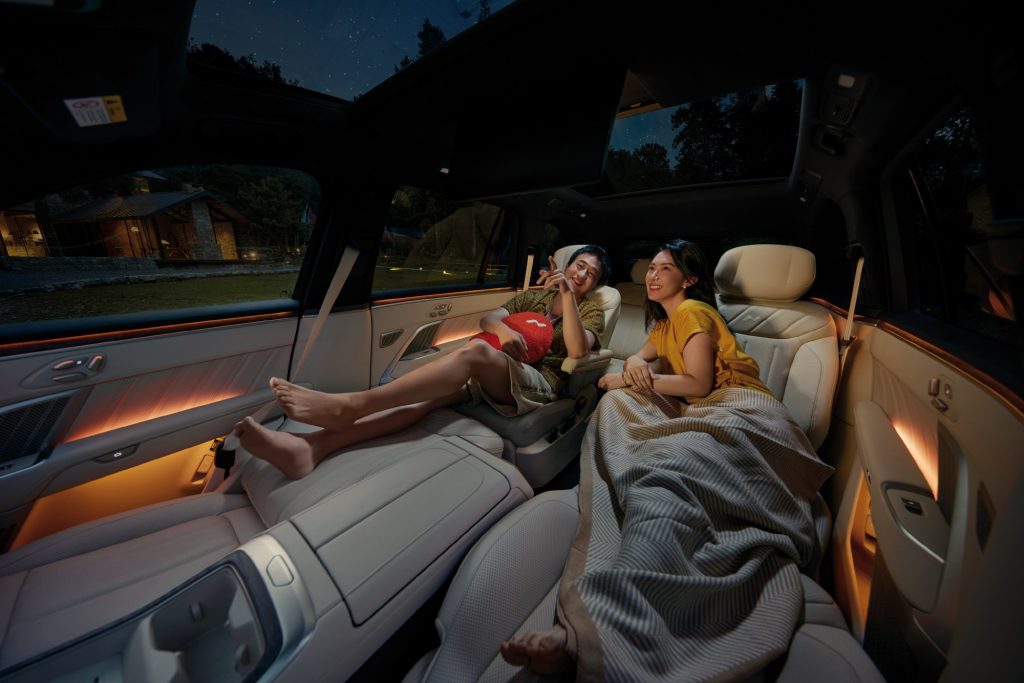
As with many modern Chinese SUVs, the interior is highly flexible. The front seats can recline fully backward to create a bed-like space. The front passenger seat can also fold forward completely, giving the right-side second-row passenger limo-style legroom. Additionally, the second-row seats recline 38°—perfect for naps or camping, though only if the third row is unoccupied.
No Frunking Kidding
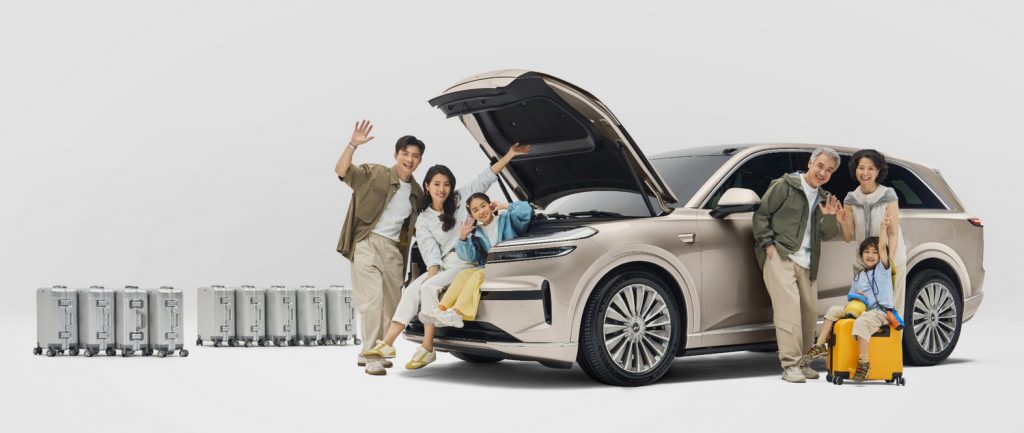
Onvo has gone all-in on one feature: the frunk. According to Onvo’s website and social media, about 90% of their L90 marketing is frunk-related. Onvo has posted countless photos and videos, hosted a frunk-focused media event, and hired influencers to make more frunk videos. It is the first time that any Chinese car brand has focused so much on the frunk. So, what’s the big deal?
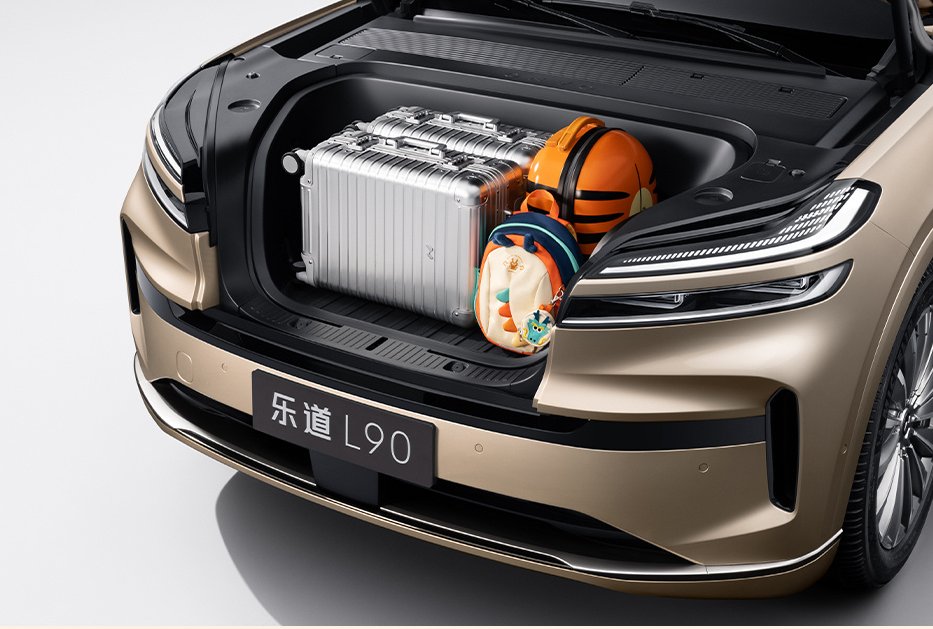
Well, it’s a very big frunk—240 liters (8.47 cubic feet) to be exact. That’s large enough to fit an unfolded baby stroller. It opens down to the bumper and is 23.6 inches wide, making loading and unloading easy. The frunk opens automatically with a knock on the hood, and it has a soft-close. Onvo claims the frunk can hold two 20-inch suitcases + two children’s suitcases, or one 30-inch suitcase. Let’s not forget about the trunk: that’s another 430 liters (15.2 cubic feet) or 1214 liters (42.9 cubic feet) with the rear seats down.
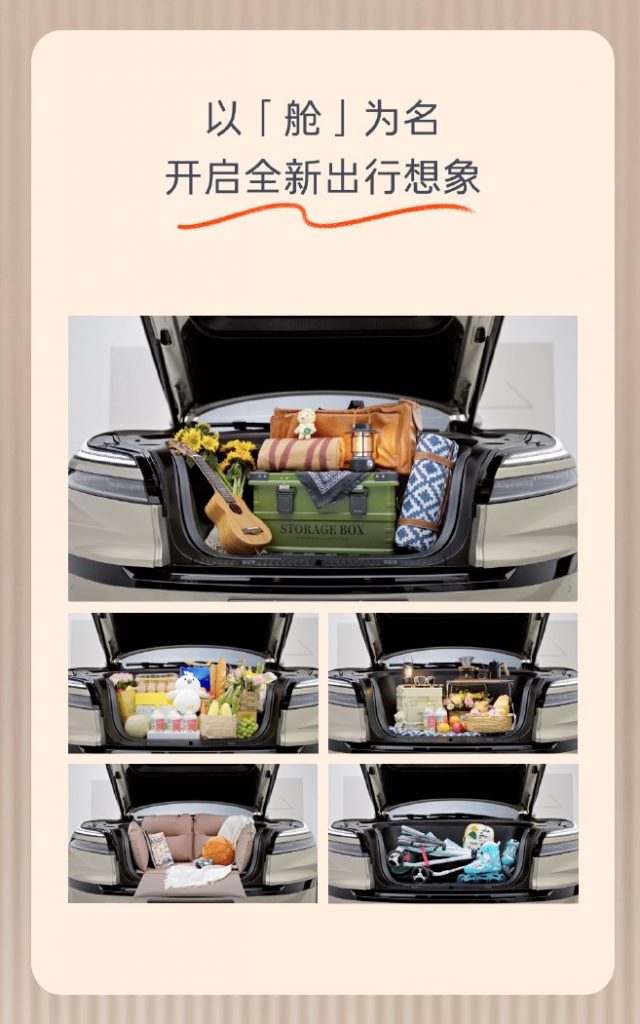
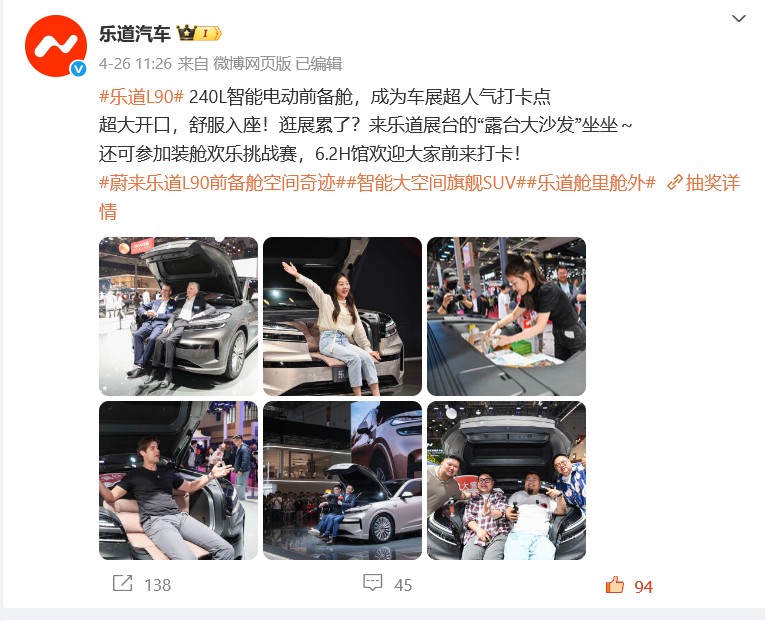
Screenshot of a typical frunk-focused Onvo social media post, showing folks at an autoshow checking out the bench.
Frunk-equipment
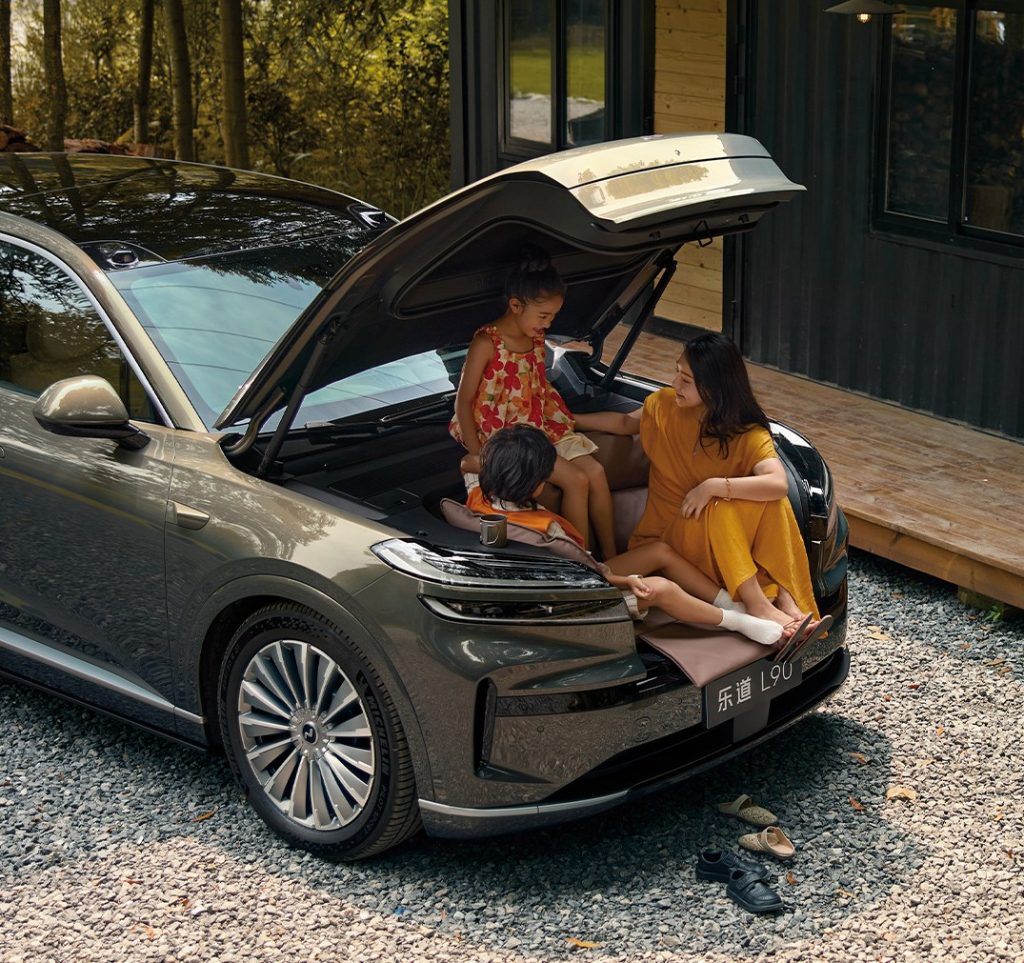
Standard frunk equipment includes pillows and cushions to turn it into a cozy sofa—big enough for one adult or two kids. There are shallow cup holders on both sides so you can enjoy a coffee while admiring your frunk. It also includes luggage hooks, a luggage net, and a drain hole.
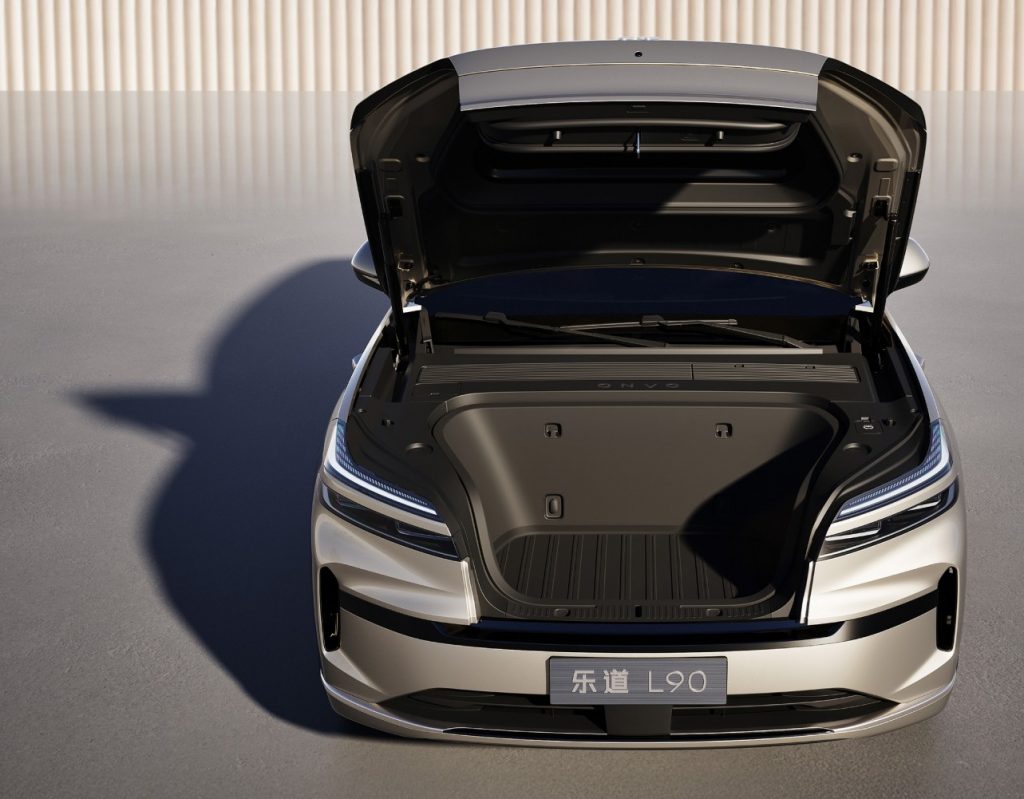
However, there’s one oversight: no power outlet in or near the frunk. So, if you need electricity up front, you’ll have to route it from the cabin or use the car’s V2L (Vehicle-to-Load) charging port.
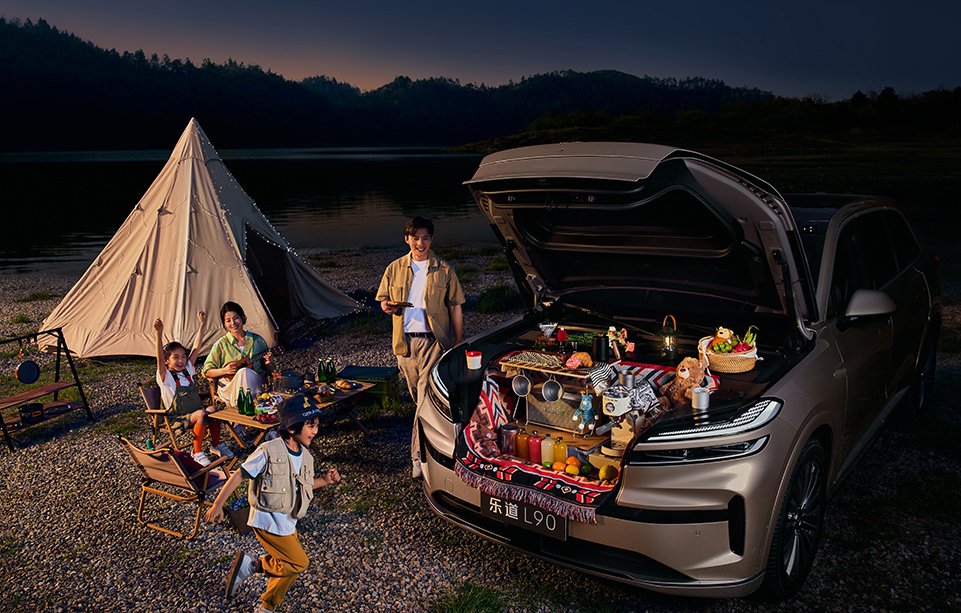
Turning the frunk into a camping table. With a coffee machine on the left, cups in the holders, and a whole lot of juice.
New Frunkio
As I was typing these words, Onvo posted a new frunk video. Ready for some cringe..?
Platform, Power, And Battery Tech
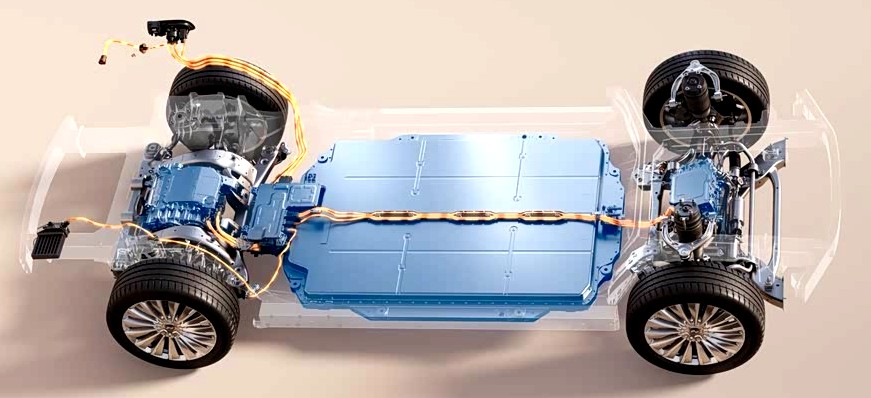
The Onvo L90 is based on NIO’s NT 3.0 platform with a 900V architecture. This platform also underpins the NIO ET9 and the new NIO ES8. The L90 is a large machine: 202.5/78.6/69.5, with a 122.4 wheelbase. Onvo offers two powertrains.
- Single-motor, RWD. The output is 456 hp/295 ft-lbs. 0-100 in 5.9 seconds. Battery: 85 kWh NMC. Density: 193.2 Wh/kg. Consumption: 14.5 kWh/62 miles. Range: 376 miles (605 km).
- Dual-motor, AWD. The output is 590 hp/395 ft-lbs (134 hp/ 100 ft-lbs front and 456 hp/295 ft-lbs rear). 0-100 in 4.9 seconds. Battery: 85 kWh NMC. Density: 193.2 Wh/kg. Consumption: 14.5 kWh/62 miles. Range: 354 miles (570 km).
The top speed is limited to 124 mph.

NIO Inc. develops and produces the electric motors in-house. The motor series for Onvo is called W-PIN. The photo shows the 456 hp rear motor. It is compact and light. Size: 20.4/18.3/13.2 inches. Weight: 174 pounds. The output is 5.8 hp and 4.3 kW/kg, and 47 ft-lbs per 2.2 pounds.
ADAS
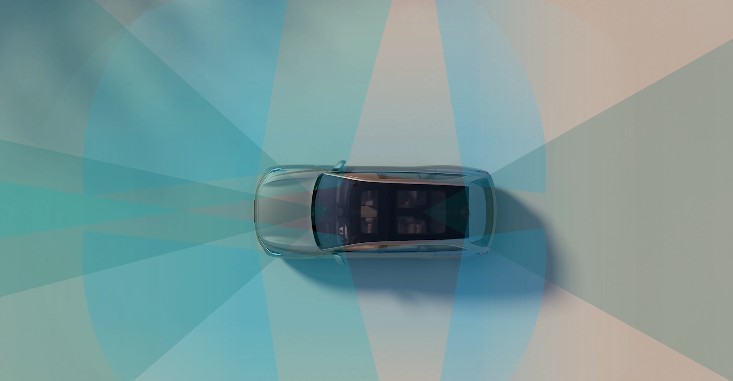
Basic L2 with 26 sensors: 11 cameras, 14 ultrasonic radars, and a 4D millimeter-wave radar. The 4D radar is an industry-second, after the Xiaomi YU7. Computing power comes from an Nvidia Drive Orin X chip with 254 TOPS, which, in the context of the ADAS pissing contest, is not a lot.
Colors & Trim

Color names are a big thing in China. Most brands type up a separate press release about colors, complete with poetic explanations for each color. Onvo’s color names are quite nice: Cloud Gold, Rock Ridge Brown, Snow Peak White, Chenhui Silver, and Jingyue black. Let’s take Cloud Gold as an example. This color was, according to Onvo, “inspired by the magnificent scene of the rising sun rising from the sea level in Penglai Pavilion, which is extremely beautiful and thriving.” The Penglai Pavilion is a famous pavilion/tower/castle situated on the coast of Yantai in Shandong Province, dating back to the Tang Dynasty (618 to 907 AD).
Pricing
Pricing is always a bit complicated with NIO Inc. Consumers can buy the car outright or go for Battery as a Service (BaaS). With BaaS, the ownership of the battery remains with the company, and the owner pays a monthly fee. The outright buying price of the RWD version of the Onvo L90 is 279.900 yuan, and that exchanges to $39K. With BaaS, the price goes down to 193.900 yuan or $27K. Onvo hasn’t specified the monthly BaaS subscription fee, but it is expected to end up around 1000 yuan ($140) per month. The price of the AWD version is yet unknown. Onvo will announce it later this month. Deliveries of the Onvo L90 will start on August 1.
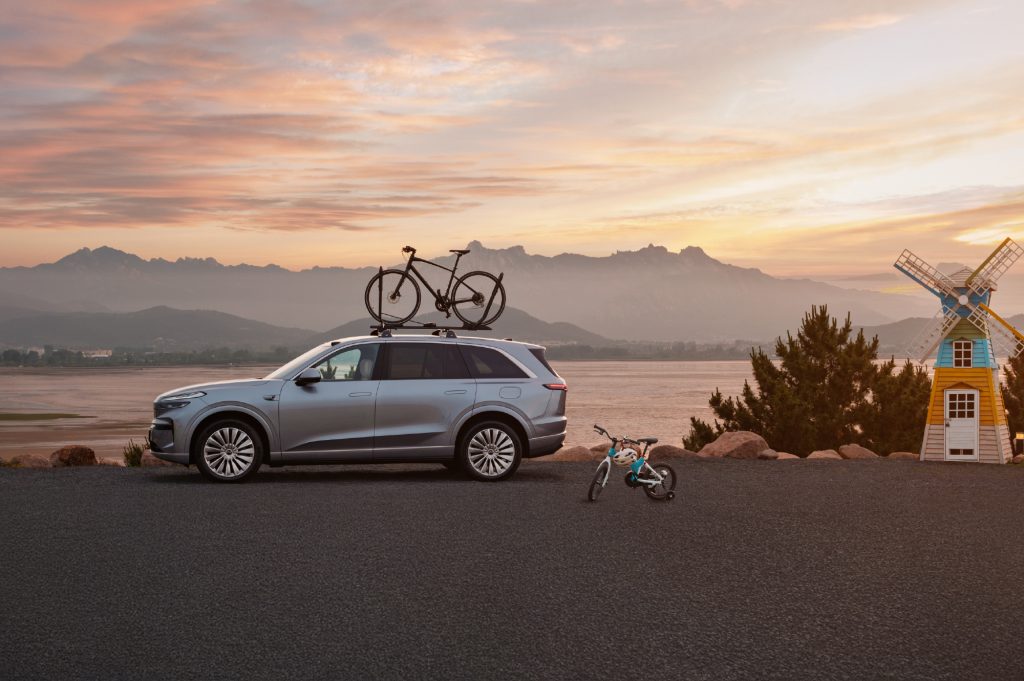

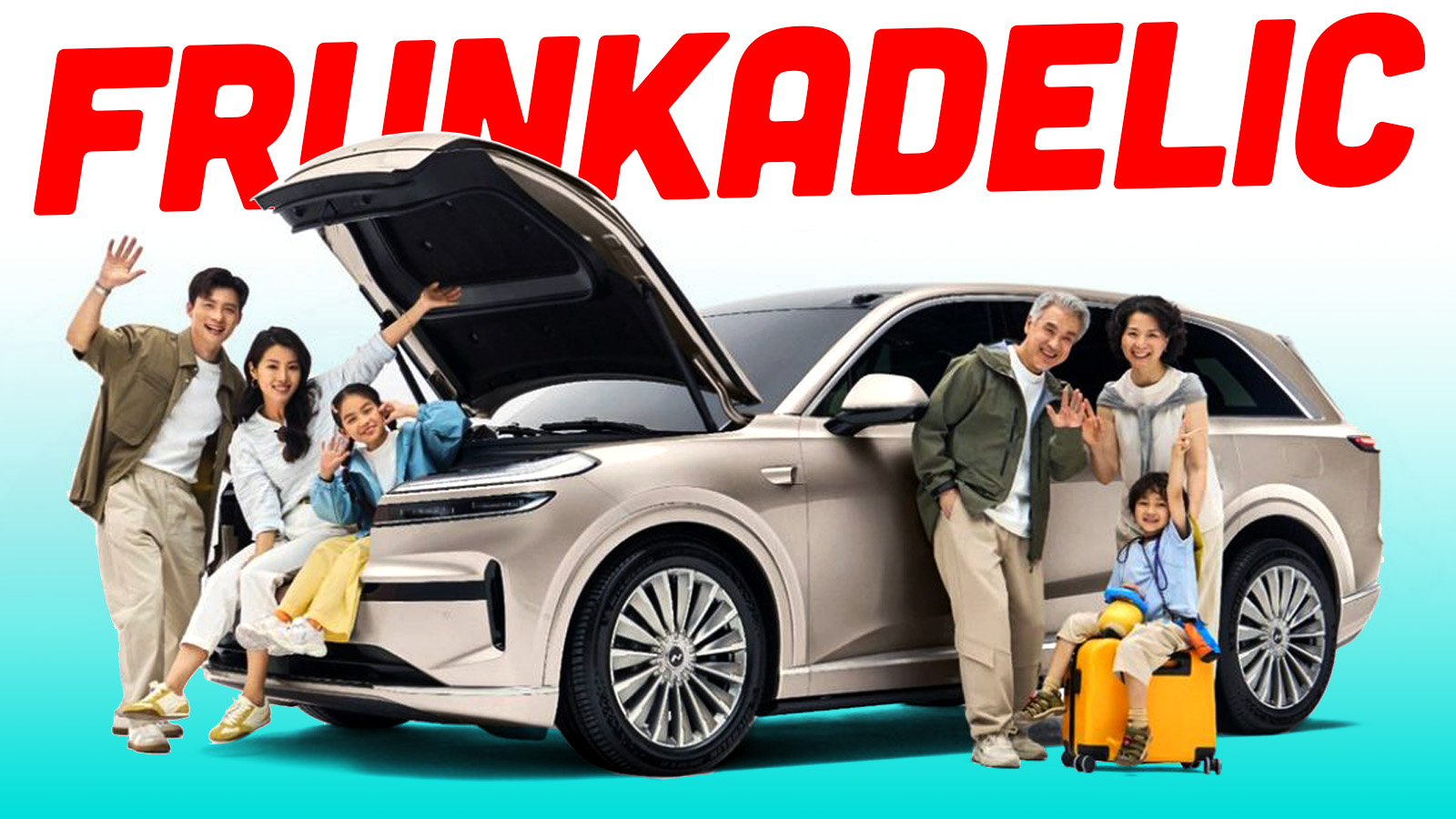




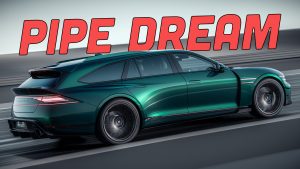
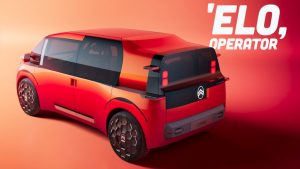
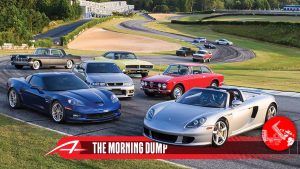
Battery swapping is a bullshit idea.
The AI images are becoming ridiculous, like the deer inside the van picture.
Onvo AI-generated an entire zoo
https://img.dutenews.com/a/10001/202409/dd8e0b7b70e8566ca762180609ee5021.jpeg
Paragraph after paragraph of useless geegaw then…wow that is a nice frunk.
The nicest, indeed.
Once again, the Chinese automakers and heading towards the future while US automakers (and politicians as well) are taking standing still and hoping for the best. We, as Americans, does not deserve nice cars like this.
Is there some rule for Chinese adds that fathers have to wear a forest-green jacket, mothers have to wear white, and children have to wear blue? And everyone must wear khakis?
Isn’t it a little weird that in the lead image, that both groups are dressed almost identically?
Yeah, khakis are popular now when advertising family SUVs. It’s the family-glamping-outdoors thing.
I always thought that any professional video, movie, TV, ads, etc. had a professional wardrobe department. It’s really surprising how identical they are.
“Which guy do you want in the green jacket?” – “Yes.”
Of course, the director didn’t work to hard either.
“Okay, now, all of you smile, and hold up one arm and wave at the camera.” “Done. Print. Wrap.”
The kid on the left almost got fired by holding up two arms!
Are the swappable batteries shared with any other manufacturers cars? How have they fixed the connector life problem? Have they had to handle an upgrade to the battery pack yet? Do they use dry break coolant connectors or bleed the system?
“Naturally, there are no traditional door handles. Instead, doors open with the push of a button.”
Cool, sometimes I like being trapped in a burning car.
I’m joking, obvs. I got trapped in a car with normal door handles once, although that was mostly to do with broken fingers and a fractured spine, rather than indefensibly stupid interior design features.
Hi! The swappable batteries are only shared within NIO Inc., not with other manufacturers. NIO has been trying to get other car makers interested for a long time, but so far without success.
It’s a shame that the industry didn’t adopt battery swapping as a standard. It’s been hard enough to develop compatibility and standards in charging however. Battery swapping would have changed the EV market worldwide but it will never happen unfortunately. That ship has sailed.
Wow! All of those photos make it appear that life in Communist China is an absolute utopia.
1. Marketing photos are not representative
2. It isn’t, but it is as close as I have ever experienced.
“As I was typing these words, Onvo posted a new frunk video. Ready for some cringe..?”
I see Chinese families are no different from American families in feeling the need for a massive SUV to transport a family of four and all their crap.
Firefly, budget, launched in 2025. Models: 1. Price range: $16.7K – $17.5K.
Not according to your link:
“Firefly launches attack on Mini: 104 kW and 330 km range for 29,900 euros”
29.9k euros works out to $35.2k freedom dollars.
What do we call the recycling facilities of Firefly cars?
“Grave of the Fireflies”
That’s a movie I can only watch once.
Haven’t seen that one yet.
It used to be a pain in the neck to find. Now it’s on Netflix.
My bad. That link refers to an article about the EU launch, with the EU price. The price of the Firefly in China is 119.800 yuan ($16.7K) without BaaS and 79.000 yuan ($11K) + 399 yuan ($55)/month with BaaS. Greetings!
Thanks for the clarification. The Dutch link mentions battery swap does not yet work for the Firefly either in Europe or China. So can one buy the car for the lower price and not pay the subscription till its available?
If tech integration is what you want, this appears to deliver in spades, plus an almost Toyota Century level back seat. Chinese EVs are way ahead of ours, and car makers should be offering comparable vehicles here.
As if right-wingers adopting YMCA as their theme song isn’t bizarre O world enough, now China is the King of Frunkadelica! I picked a fine time to quit…nah, I just poured one.
For the hallowed legacy of Buck Turgidson, we must not allow a frunk gap.
I might have missed it but what is a going rate for a swap? Is there any price adjustment for turning in a weak/failing pack?
With a typical road trip charge up of 10-80% on my 100kwh pack I’d be paying around $30-40 and taking an hour or so (chargers vary so much in price and capacity it’s hard to pin down). The idea of just swapping the pack in a couple minutes is appealing.
That’s what I get for skimming. Not terrible for a major road tripper but that’s $1600/yr. EVs tend to have decent warranties so that winds up being a bit steep for essentially insurance on the battery.
Depends on what you meant by weak/failing:
If you meant the charge is near 0%, you are charged by kWh plus a flat rate swapping service fee.
If you meant that the battery’s health is failing, I’m not exactly sure how that’s handled for non-BaaS customers; BaaS customers could just swap for an equivalent, healthier pack. Non-BaaS customers might also be able to do the same, but I’m not sure if/how pack ownership is tracked. Perhaps it’s only Nio who’s on the hook if a pack fails.
I’m mostly referring to packs with problems – bad cells, normal capacity degradation, physical damage, etc. Actual power costs are interesting, too.
The closest analogy in my mind is the propane or welding tank exchange. There’s an assumption that some percentage of tanks turned in will be unsuitable to be refilled and sent back out for whatever reason so that’s baked into the price. I’m just curious how they are accounting for that.
Battery swapping solves two of the biggest concerns for most EV drivers.
Assuming the infrastructure is there, you solved the problem of range anxiety, and battery degradation, all within the same timeframe of a typical fill up.
I do wonder how many of those batteries each swap station would need to keep in reserve, and what reconditioning of the batteries would look like.
That’s a good looking car…sigh. As an American, I am starting to consider our lunches eaten.
I agree, on both counts.This is like the 50s when the US automotive landscape was full of great new designs and tech the rest could only dream of. Well, China is now shaping up to be the new chapter.
I think it’s like the 70s. Every American car was a bloated boat with terrible build quality and terrible fuel economy, but it didn’t matter because the Big 3 controlled the market.
Then Japanese cars came on the market in the early ’80s and were a bit of a revelation and forced the US companies to actually innovate.
I’m mixed on this though. Forcing US companies to innovate by letting in Chinese companies sell here would be good, but it needs to be on a level playing field. But China has no interest in trading on a level playing field. (Government ownership and security concerns, massive government subsidies, stealing IP to fuel their innovation, fixed dollar/yuan exchange rates, etc.)
[insert quote about “no such thing as a fair fight”, or “If it’s a fair fight, your tactics suck”, etc.]
I think it is more like bubnle era Japan but with no Plaza Accord
I feel like the US is more and more becoming the fat old guy showing up to college parties, bragging about the glory days 40 years ago, while everyone else is wondering “who is that creep?”
We certainly have the talent to do much better, but not sure if society overall has the motivation to do much more than bicker.
Interesting take. I wonder if the Chinese consumer is rooting for their best companies to fail?
That’s on you, Kommentariat.
Who’s rooting? GM makes a $50k EV that’s butt-ugly, offers zero smartphone integration, and has reliability issues up the wazoo. They’re snatching defeat from the jaws of victory and praying (paying?) they get to compete in a closed market indefinitely.
I haven’t seen ad nauseum articles and comments on how awful GM EVs are. It’s Tesla that innovates and has a chance at beating China. And we root for it to fail. All of the whining and panic, or “bickering” has born fruit. Look at Teslas latest earnings.
Funny thing is that now we can report here (and elsewhere) how awful Tesla is doing. Self fulfulling prophecy.
“It’s Tesla that innovates”
Lest we forget it was Tesla who came up with the idea of gluing a cheap touchscreen on the dash to control everything in the car including the glovebox.
Oh, and electronic doors that fail to open when the power goes out, sometimes resulting in the deaths of its occupants:
https://www.fastcompany.com/91227786/teslas-latest-tragic-fire-is-a-reminder-of-why-cars-need-old-school-door-handles
Way to go Tesla.
Is it possible to root for Tesla to do well, and for musk to go away (or absolutely go down in flames)? I feel like they could certainly be complementary at this point.
I wonder what an alternate universe would look like right now, where some years back musk ran himself over with a self driving car, and instead of the cybertruck, Tesla put their effort into a low cost platform with hatchback/wagony/small pickup variants. And more charging infrastructure. And didn’t piss off most of their customer base.
I don’t think it’s rooting. I think it’s a combination of envy, bruised ego and resignation. Tesla notwithstanding. I think most people’s issue is not with the company as such, and let’s leave it at that.
I’m not rooting for GM, Ford and others to fail. I actually want them to succeed. Hell, I drive a Ford and I love it. But I also want nice things and I’m 1) seeing it less and less from established manufacturers, and 2) even if they are nice, it is at a huge expense so what good is it. Also, me/us rooting for one vs another doesn’t mean or change dick. Car manufacturing is not a sports event, nobody cares.
The fact is, China is both learning and growing rapidly and the rest are stagnating having trouble keeping up. I’m not rooting for anyone to fail but I won’t lie that the forbidden fruit is not looking more and more tasty.
Really? Maybe five years ago, but nowadays Teslas are seen as entry level offerings in Mainland China, cheap enough to buy if you want an EV and can’t pony up for a nicer Denza or Nio but won’t be caught dead in a Chery or BYD.
That’s why they’ve had 9 straight months of declining sales in that market alone. The Chinese don’t care about Elon Musk and his shenanigans, but they do care that Tesla products are woefully outdated and offer little of the infotainment and charging tech that the current Chinese consumer wants.
Unless Tesla can magically pull out a next generation Model 3 or a new Model Y (and not just a lazily facelifted one) their lead has basically been squandered. Yes, their products still sell well, but not for much longer. Not with Xiaomi on the horizon.
‘beating China’? Are you aware that Tesla builds the majority of their global output out of its factory in China?
Or to get yet another sweet, sweet bailout.
Actually for many years Chinese consumers regarded their own brands as inferior. There is a reason why GM sold more cars in China than in the US throughout the 2010’s. It’s only in the post-Covid years that Chinese consumers finally warmed up to their own brands.
The fat old guy running the show right now is trying his damnedest to take us back to his perceived glory days of yore.